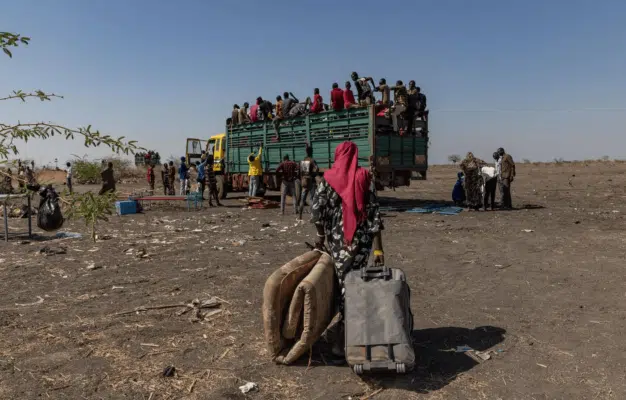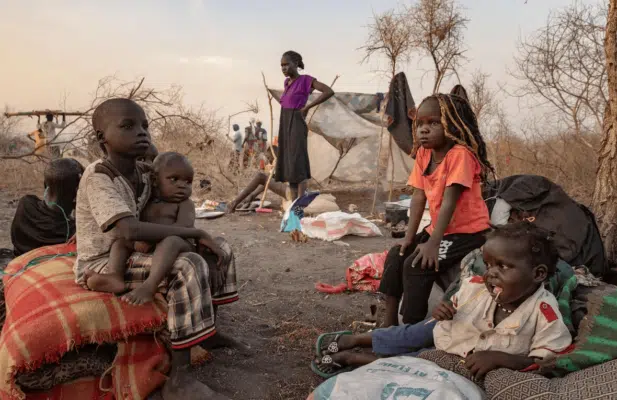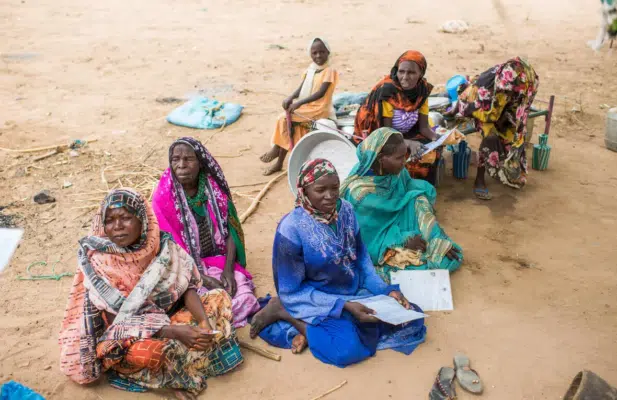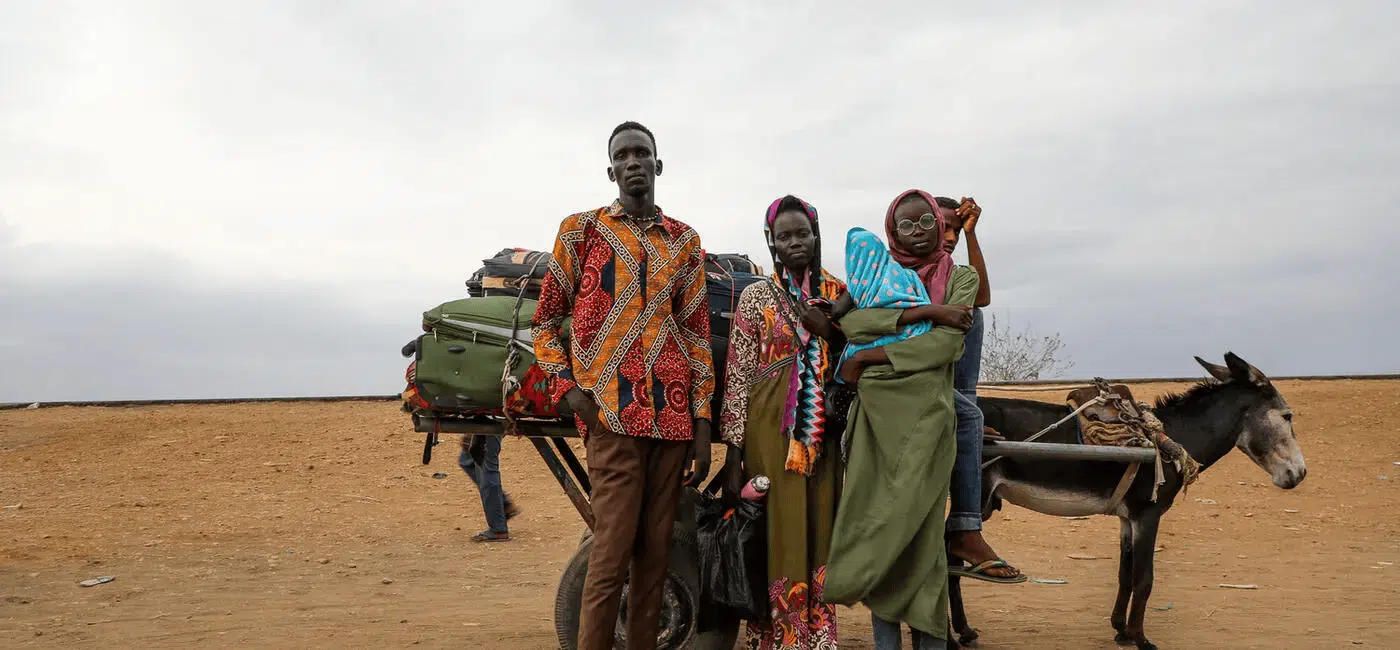
Malual Mayom Deng and his family at the Joda border point in Renk, South Sudan where tens of thousands of South Sudanese returnees have crossed after fleeing the violence in Sudan.
© UNHCR/Charlotte Hallqvist
Tens of thousands of South Sudanese refugees are returning home to escape the violence in Sudan, but many find themselves stranded in remote border areas.
Alekiir Kaman Dau Ayuel, 25, sits under a tree outside a transit centre in Renk County, in South Sudan’s Upper Nile State, with her mother, aunts and brothers. They have just crossed the border from Sudan after a narrow escape from Khartoum where fighting continues.
Alekiir was studying computer science at the International University of Africa in Khartoum and had been planning to switch to biology before the violence erupted on 15 April. Terrified, she and her family sheltered inside their home while fighting raged in the street. They could hear gunshots and airstrikes.
“Many people died, and they didn’t even bury the bodies.”
“Many people died, and they didn’t even bury the bodies, they were just on the street,” she said.
During a lull in the fighting, they took their chance to escape. They boarded a bus, leaving everything behind to seek safety in South Sudan, a country they had fled nearly a decade earlier at the height of a brutal civil war.
“I was thinking I would have to leave Khartoum one day after I finish university and look for work, but I didn’t imagine that war would come,” said Alekiir.
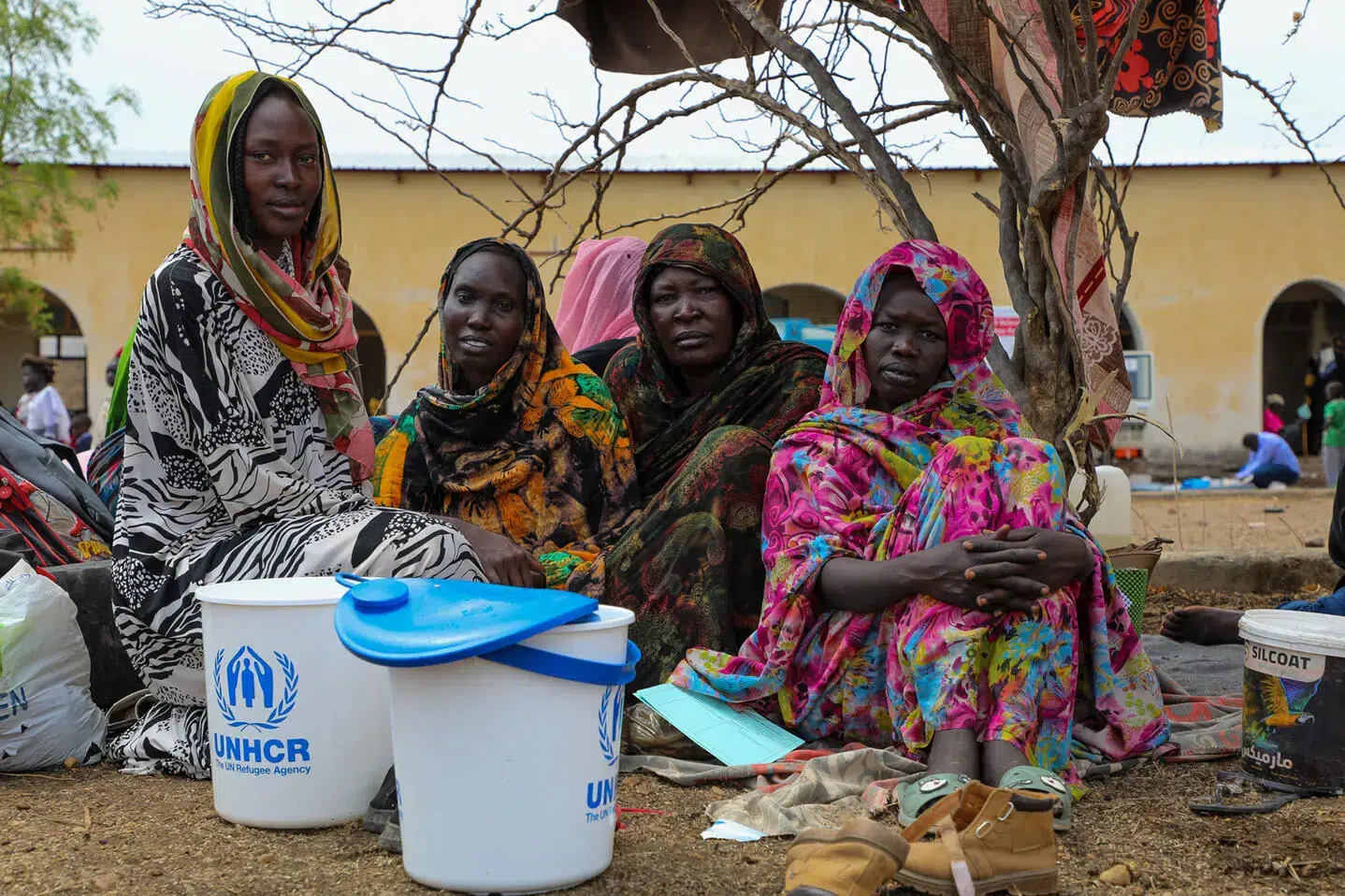
Alekiir (left) sits with her aunt, mother, and cousin outside a transit centre in Renk. © UNHCR/Charlotte Hallqvist
Border area under strain
Some 800,000 South Sudanese refugees were living in Sudan, but since the violence erupted in Khartoum and quickly spread to other areas of the country, nearly 46,000 have crossed back to the country they once fled. Many are now stranded in Renk where services are extremely limited and humanitarian agencies are racing to scale up emergency assistance.
UNHCR, the UN Refugee Agency, is helping transport people from the border to the transit centre it set up with other humanitarian partners. There, new arrivals are provided with basics such as food, water, blankets, mats and buckets, as well as emergency medical treatment. UNHCR is also building communal shelters to house over 500 of the most vulnerable as well as emergency latrines.
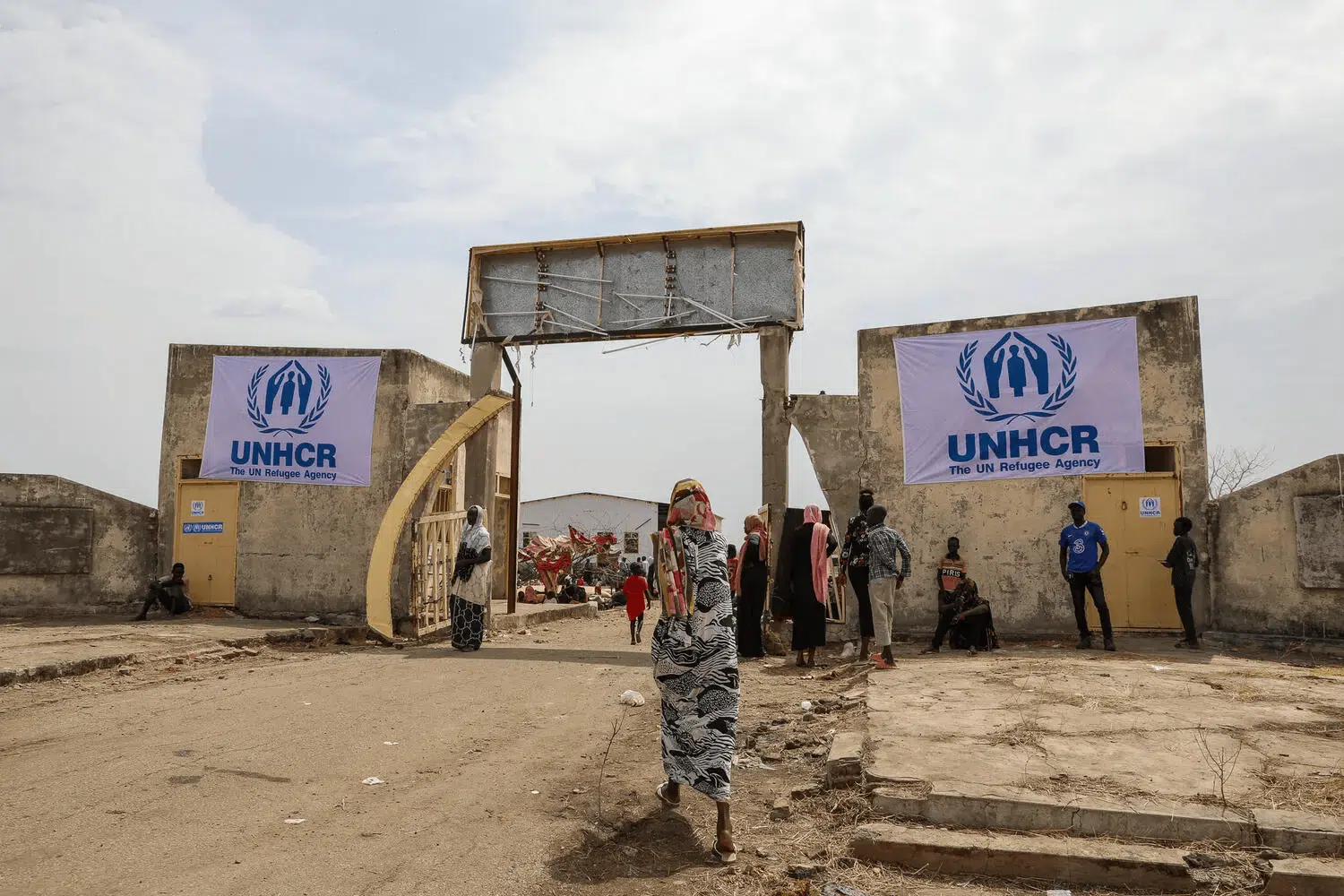
The transit centre in Renk is providing new arrivals with basics such as food, water and blankets. © UNHCR/Charlotte Hallqvist
But this new emergency is straining an already stretched and underfunded response in a country that is still reeling from the devastation of a brutal seven-year civil war that ended in 2020. Over 2.2 million people remain internally displaced due to the conflict and the impacts of climate change, while three-quarters of the population are in need of aid. In addition, South Sudan is hosting more than 300,000 refugees from Sudan and other countries.
Aid agencies are concerned about the wider impact of Sudan’s conflict on conditions in South Sudan’s northern states, which are dependent on Sudan for many basic goods and food. The conflict has already disrupted cross-border trade, sending market and fuel prices skyrocketing in Renk and creating scarcities of bottled drinking water and other essentials.
Limited transport options
Meanwhile, flooding linked to climate change has devastated much of northern South Sudan’s already limited road infrastructure. For those returnees hoping to travel onward to their home areas, transportation options are limited and out of reach for most.
“UNHCR is here, helping transport people to our transit centres, but without additional resources, it will be difficult to move them onward,” said Lillian Sabasi, UNHCR’s Associate Protection Officer.
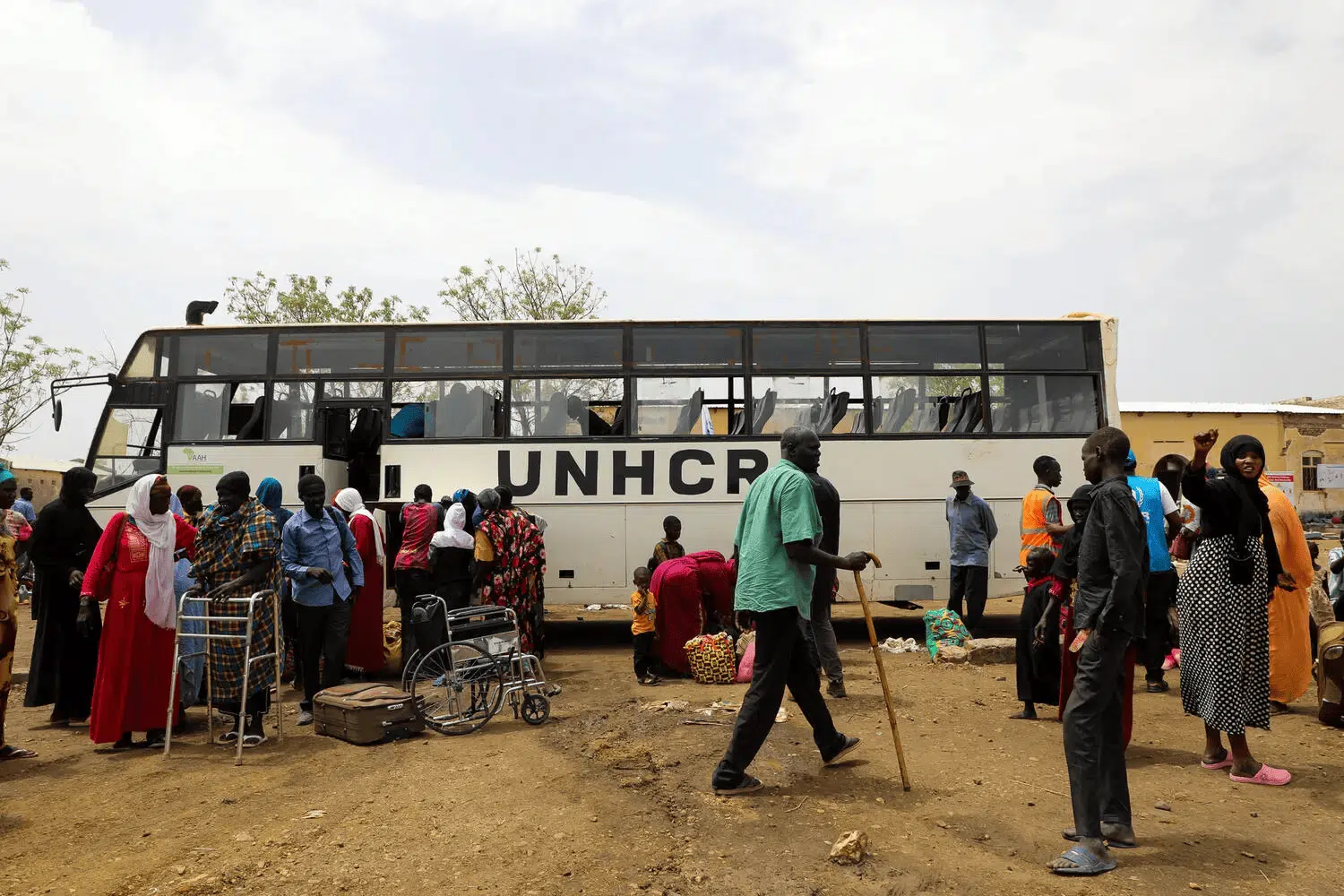
A UNHCR bus takes vulnerable new arrivals from the Joda border point to the transit centre in Renk. © UNHCR/Charlotte Hallqvist
Malual Mayom Deng and his family spent most of the money they had buying bus tickets to get out of Sudan.
“One person was 35,000 Sudanese pounds [US$58], and we are eight, so it was very expensive,” he said. “It took us two days to come to South Sudan.”
They made the last leg of the journey in a donkey cart stacked with their only remaining belongings.
“Now we are fleeing again, back to our home.”
Like Alekiir, it was not their first time fleeing a conflict. “In 2016, we fled South Sudan because of the crisis,” said Malual. “We became refugees in Sudan; we wanted safety. And now we are fleeing again, back to our home.”
Home is in Northern Bahr el Ghazal region, hundreds of kilometres to the southwest, but it is not clear how they will get there. Even contacting family members back home is a challenge due to poor mobile connectivity.
Those who are able to return to their home areas are likely to find communities that are extremely fragile as a result of climate change, conflict, and food insecurity.
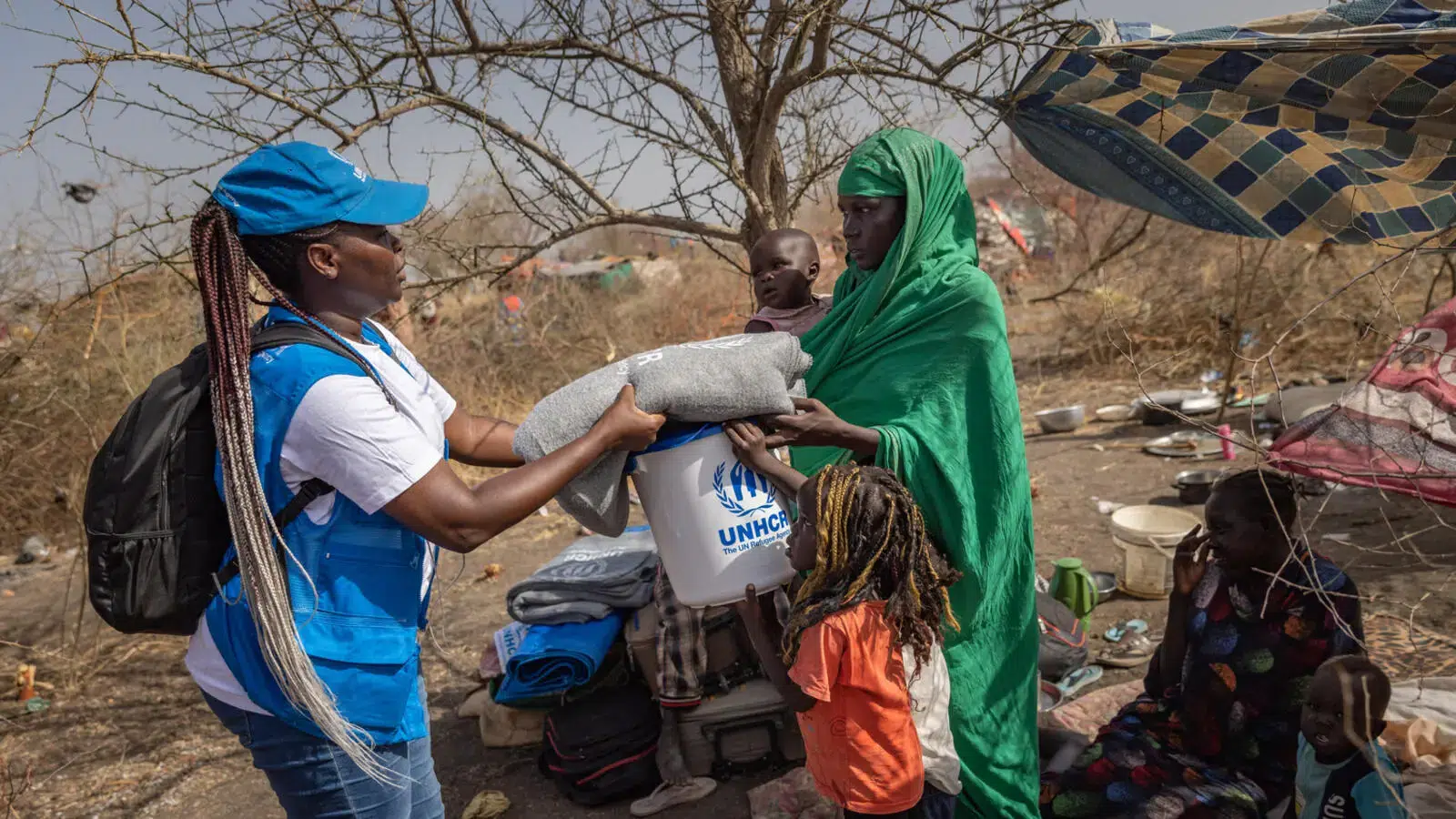
UNHCR Associate Protection Officer, Lilian Sabasi, explains the situation at South Sudan’s border with Sudan. © UNHCR
“South Sudan already was facing a major humanitarian crisis,” said Sabasi. “A large unplanned number of new returns may destabilize already struggling local communities and exacerbate [the] crisis.”
Alekiir and her family are hoping to return to their home in Melut in South Sudan’s Upper Nile State.
“Before [violence] broke out in Khartoum, I was making a lot of plans,” she said. “I wanted to study biology to be a doctor and work to help people.
“Now I do not know,” she added. “As long as I am still alive, I have a chance, I still have a chance to do something.”
Originally published by UNHCR on 15 May 2023.



